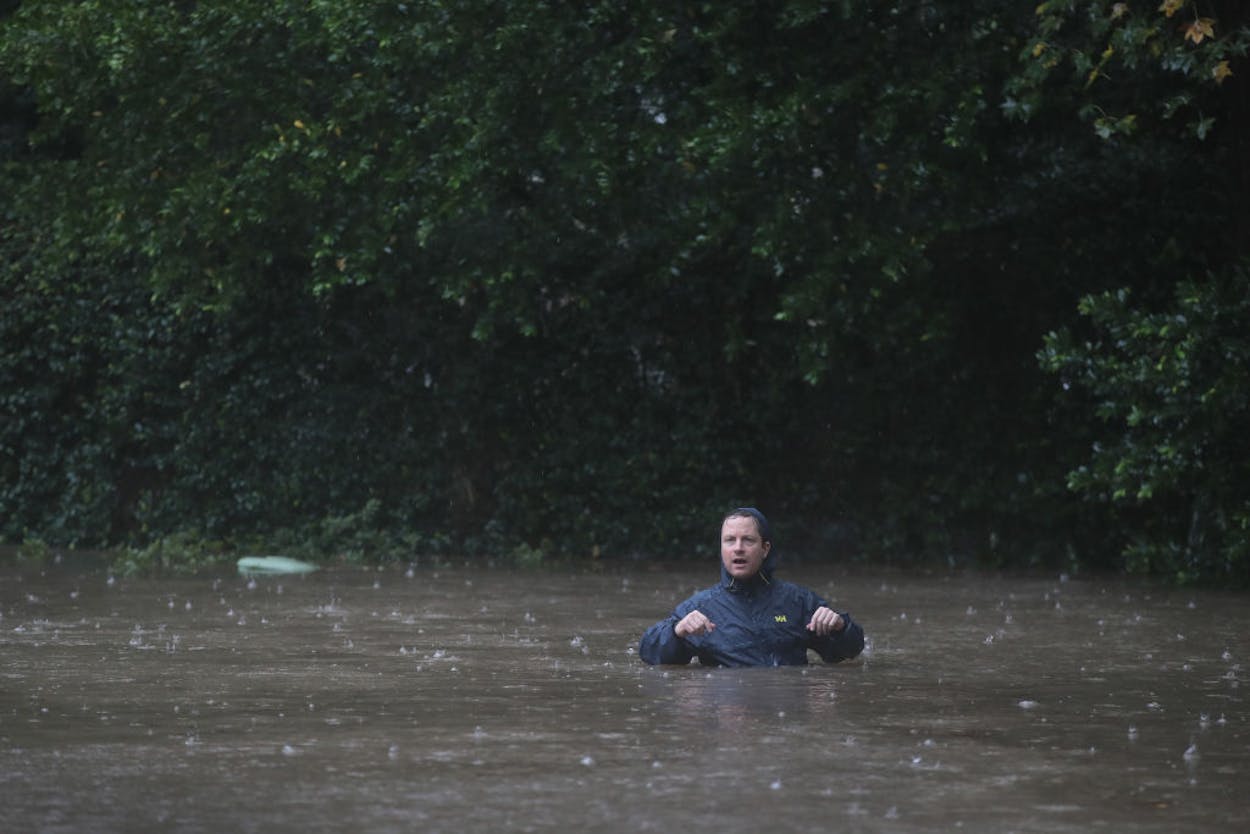Since making landfall in Rockport on Friday night, Hurricane Harvey has continued to bring devastating floods and wind along the Gulf Coast and Southeast Texas.
Downed power lines left 250,000 people without power. Tornadoes created by the hurricane have damaged 50 homes in Fort Bend County. Public facilities throughout the region, including hospitals, prisons, and both Houston airports, have been evacuated and closed. Over 1,000 people, trapped in their homes by flooding, were rescued over Saturday night. At least five people have died as of press time, including a man who was killed by a house fire in Rockport and a woman drowned after water flooded her car in Houston.
The storm has also impacted oil production in the region, where dozens of gas stations have run out of fuel. A million barrels a day of oil-refining capacity have shut down along the Gulf Coast, and oil shipping terminals have closed in Corpus Christi.
Although mandatory evacuations were ordered for cities along the Gulf Coast before the storm, no order was issued for Houston. “Please think twice before trying to leave Houston en masse,” wrote Mayor Sylvester Turner in a tweet on Friday, referring to the 100 deaths after 2.5 million people evacuated ahead of Hurricane Rita in 2005. “No evacuation orders have been issued for the city.”
Houston has received over 24 inches of rain in the last 24 hours, pushing August as the wettest month in recorded Houston history. “I know for a fact this is the worst flood Houston has ever experienced,” said Patrick Blood, National Weather Service meteorologist. Houston 911 lines are inundated with calls, and panicking residents have turned to social media to seek rescue. Emergency responders have put out an open call for high water vehicle or boats from community members in Harris County, as rivers and bayous across Houston have reached record levels.
Do you have a HIGH WATER VEHICLE or BOAT and helping rescue in your community? Call us to coordinate: 713-881-3100. Ask for Fire Marshal. pic.twitter.com/D3SfSYWgxr
— Harris County OHSEM (@ReadyHarris) August 27, 2017
Agencies and regions beyond Texas have sent aid. The National Guard reached Houston on Sunday, rescuing stranded residents using high-water vehicles. New York, Virginia, and Florida have all sent emergency workers and equipment. “After Superstorm Sandy, so many cities stepped up to help our people,” tweeted New York City Mayor Bill de Blasio, who sent 120 emergency personnel to Texas. “We’ll do all we can to help those affected by this storm.” President Trump has praised the coordination of government aid, and has promised to come to the state “as soon as that trip can be made without causing disruption.”
Wow – Now experts are calling #Harvey a once in 500 year flood! We have an all out effort going, and going well!
— Donald J. Trump (@realDonaldTrump) August 27, 2017
Although Harvey has been downgraded from a hurricane to a tropical storm, the flooding will likely last four to five more days, and areas across Texas are preparing for further damage, including tornado and flash flood watches in Austin and San Antonio. Areas along the Gulf Coast could see 50 inches of rain within the week.
The lasting damage of the hurricane’s devastation remains to be seen. “FEMA is going to be there for years,” says Brock Long, director of the Federal Emergency Management Agency.
This event is unprecedented & all impacts are unknown & beyond anything experienced. Follow orders from officials to ensure safety. #Harvey pic.twitter.com/IjpWLey1h8
— NWS (@NWS) August 27, 2017






